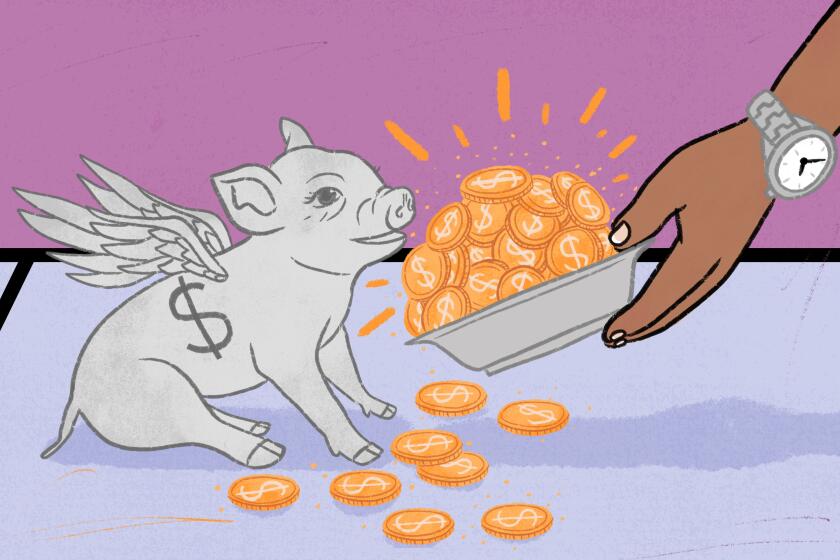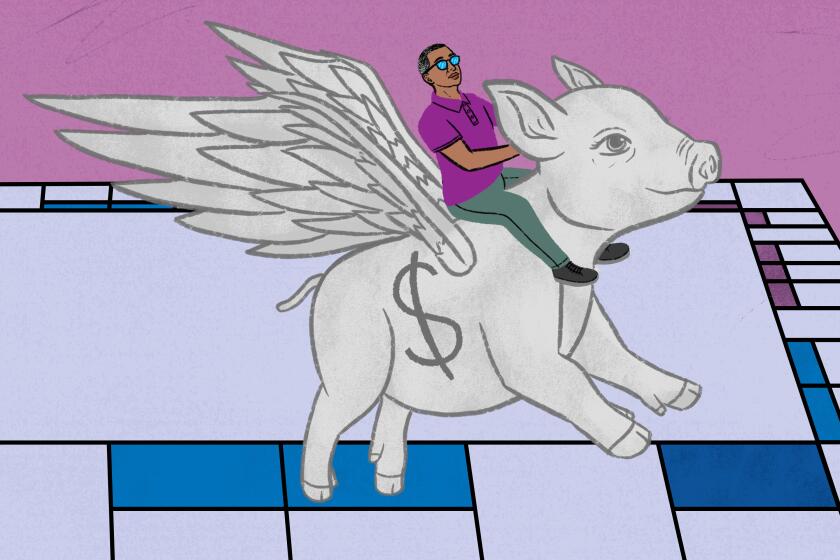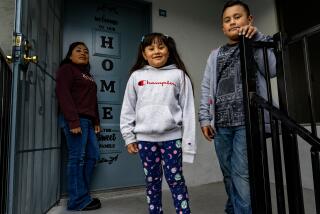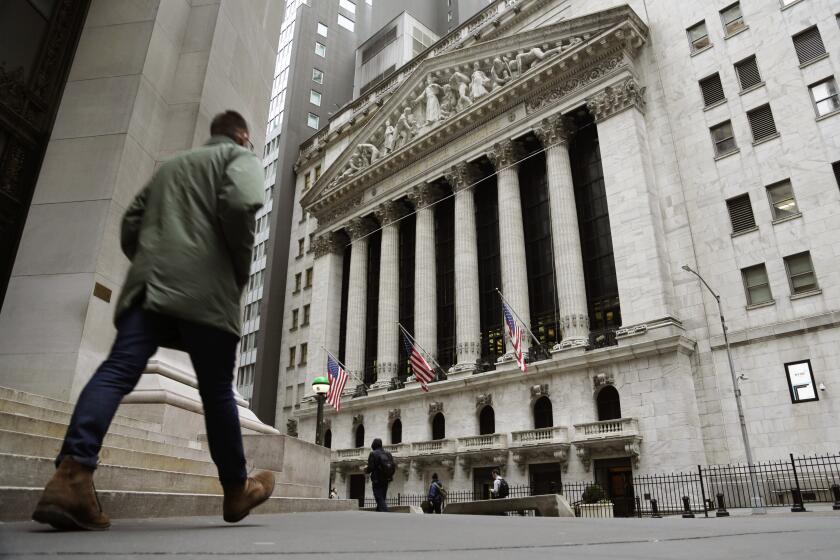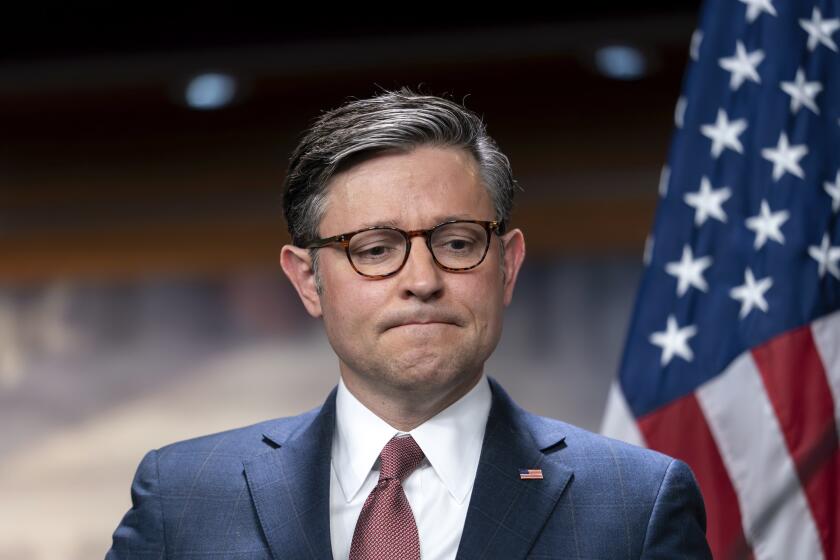
- Share via
Vladimir Putin’s invasion of Ukraine was shock enough for pension funds holding Russian assets, suddenly worth little.
Then, the prolonged conflict and lingering pandemic drove inflation to heights not seen in 40 years — raising interest rates and putting an end to a decade-long bull run in stocks, the biggest driver of pension fund gains.
The collateral damage wrought by the disruption as well as fears of a protracted recession are now raising questions about the finances of the multibillion-dollar systems relied upon by more than 4 million California public workers to carry them through their retirement.
The California Public Employees’ Retirement System, or CalPERS, the nation’s largest state pension fund, experienced a 6.1% investment loss in the fiscal year that ended June 30. It was the first annual loss since the Great Recession for the fund that provides pension benefits to employees of the state and nearly 2,900 counties, cities, special districts and other public employers. Assets fell to $440 billion after topping $500 billion last year.
The California State Teachers’ Retirement System, or CalSTRS, the nation’s largest teachers’ pension plan, lost 1.3% last fiscal year, its first decline too in more than a decade.
And things may not get better anytime soon.
Don’t let the bear market keep you from retiring. But there are a bunch of other financial and emotional factors to consider before taking the leap.
Growth in advanced economies is expected to drop sharply from 5.1% in 2021 to 2.6% this year, according to a forecast released this summer by the World Bank that is 1.2 percentage points lower than its January projection — leading to worries that lackluster market returns may extend indefinitely.
In California, current and retired employees covered by CalPERS, CalSTRS and other public-sector pension plans have some of the nation’s best protection against such downturns.
A set of related court decisions called “the California rule” guarantees, with only rare exceptions, that the benefits promised to a public employee the day they begin work are the same ones they will get the day they retire.
However, new workers entering public service can be governed by a less generous set of retirement formulas due to issues such as prior unfunded pension benefits, a public agency’s own fiscal shortfalls or tough economic times.
Stocks have produced investment gains for some four decades amid deregulation, the tech revolution and rising global trade, powering through market downturns and the twin cataclysms of the tech bust and financial crisis. But some economists are not as sanguine about a recovery this time around.
NYU economist Nouriel Roubini, who famously forecast the 2008 financial crisis, believes that massive debt loads built up during the pandemic combined with high interest rates will lead to an era of low growth similar to 1970s stagflation. In his new book “MegaThreats,” he cites deglobalization, protectionism, climate change and other longer-term threats to the world economy.
More than 7 million Californians have had no access to a workplace retirement program. Can the CalSavers program help?
Ed Leamer, the former longtime director of the UCLA Anderson Forecast, said investors tend to forget that the stock market can produce mediocre returns for years on end.
“There are long periods of time when equities like the S&P 500 don’t give you any return at all. If you purchased the S&P in 1970 after their great experience of the ‘60s, you weren’t back at that same level until 1990 — 20 years later,” he said.
While the California rule shields current and retired employees from attempts to balance budgets through benefit cuts, it can amp up the financial burden on public employers to make up the difference when real investment returns fall short. That can result in service cuts or layoffs.
Pension costs played a role in the 2012 bankruptcy of Stockton, though governing officials also were accused of incompetence. By the time the city filed for bankruptcy, it had slashed its police force by a quarter, cut nearly a third of its Fire Department and reduced pay and benefits to all employees.
It’s projected that this year alone the market downturn will lead to a decrease in the funding ratio of pension plans nationwide from about 85% in 2021 to about 78%, according to Equable, a pension fund think tank. The metric is a key barometer of funds’ financial health, measuring the ratio of assets to promised benefits. A lower ratio signifies a greater sum of unfunded retirement benefits.
In California, the cumulative assets of 18 of the largest pension funds are expected to drop this year from $1.37 trillion to $1.09 trillion, lowering the funding ratio from 86.8% to 79.6%, according to an update of Equable’s annual report on the state of pensions, titled “The Era of Volatility: Asset Shocks, Inflation and War.” A pension fund’s ideal target is full funding, or a 100% ratio, which the plans last reached cumulatively in 2007 just before the financial crisis.
Republicans keep coming up with ways to destroy Social Security. Don’t let it happen.
Indeed, the financial crisis proved to be a pivotal event for the state’s pension systems, some of which had bestowed lavish benefits to employees due to the run-up in tech stocks in the 1990s. The good times didn’t last.
First came the tech bust and then the bottom fell out of the market during the housing and financial crises, causing big losses. It all led to major reform in 2013 called the California Public Employees’ Pension Reform Act. In addition to setting up a mechanism to pay for past unfunded benefits, it attempted to reduce statewide pension costs by up to $55 billion going forward.
The law targeting new employees did away with acknowledged abuses such as “pension spiking,” a practice by which an employee’s final salary — a key part of the formula for determining retirement benefits — is artificially hiked by last-minute bonuses, raises or other dubious compensation.
More broadly, it set a normal retirement age of 62 for non-safety employees, made the formula for calculating benefits less generous and placed caps on the final compensation figure that could be used to make that calculation. It also required new employees to pay half of the projected costs of their benefits.
(A majority of state pension funds are subject to the law, a major exception being cities with their own charters and pension plans such as San Diego and Los Angeles. The Los Angeles City Employees’ Retirement System lost 7% this past fiscal year, shrinking its portfolio to $20.6 billion, according to a performance report.)
The mandating of less generous benefits for new workers by the 2013 legislation echoed what was already a common practice at the local level.
Whether it’s going back to work part time, moving in with roommates or making do with less, older Americans are getting creative about retirement.
The Los Angeles County Employees Retirement Assn., the nation’s largest county pension fund with more than 180,000 members and retirees, has multiple benefit tiers. The first, Plan A, covers members hired through Aug. 31, 1977, while the last, Plan G, governs those hired on or after Jan. 1, 2013, and incorporates the state’s 2013 reforms.
Employees in Plan A were eligible for maximum benefits as early as age 62 with the final annual retirement compensation based on the highest average monthly salary during a consecutive 12-month period of service. The plan would provide a worker making $50,000 with 25 years of service $18,440 in annual retirement compensation. Under Plan G, the state reforms slash that worker’s annual retirement compensation to $12,500, according to LACERA calculations.
In announcing its poor returns for this past fiscal year, CalPERS highlighted the volatile global financial markets, geopolitical instability, interest rate hikes and inflation. It noted its investments in global stocks were down 13.1% and even bonds and other fixed income securities — traditionally safe havens in tough times — were off 14.5%.
But the fund also celebrated how its investments in private equity and other private asset classes such as real estate gained more than 20%, offsetting some of the public-market losses, though those figures didn’t include the difficult second quarter because of a lag in reporting such returns.
“We’ve done a lot of work in recent years to plan and prepare for difficult conditions,” CalPERS Chief Executive Marcie Frost said in a statement, adding that “members can be confident that their retirement is safe and secure.”
But it’s unclear whether in a prolonged downturn the fund can count on private markets to make up for lagging public market investments, which together made up 79% of its investment portfolio.
Private equity firms typically buy underperforming companies, improve their profitability and sell them for gains shared with investors. CalPERS’ investment in private equity returned 21.3% as of March 31. But such returns are predicated on rising private company valuations, which could decline amid the surge in interest rates and the fall in stock market valuations of public companies. One prominent private equity investor, Gabriel Caillaux of General Atlantic, has talked about a “crisis of value” as 14 years of ultra-low interest rates suddenly end.
If private equity returns were to turn south, CalPERS risks a replay of its experience with hedge funds, privately run investment pools that use high-risk strategies and market plays to make big returns but that also can experience big losses. The retirement fund dumped its hedge funds as a strategic asset class in 2014 after 12 years of disappointment over their fees, complexities and returns.
Jean-Pierre Aubry, the associate director of state and local research at the Center for Retirement Research at Boston College, said he worries as plans try to juice up returns by moving money out of public markets and into private investments. “They’ve actually shifted to a riskier portfolio,” he said.
Inflation too is a scourge and historically has been Enemy No. 1 of retirees, though cost-of-living adjustments can make up for some or all of the lost purchasing power, depending on the plan and rate of inflation. But that too means higher costs for public employers.
Whether it’s going back to work part time, moving in with roommates or making do with less, older Americans are getting creative about retirement.
Still, Aubry cautions against reading too much into one year of bad returns. When you average the losses out with the prior year’s gains, funds are chugging along pretty well. “It’s hard to say the downturn is any more reflective than the 2021 uptick was,” he said.
CalSTRS, for example, says that it’s still on track to retire its unfunded liabilities by 2046, the goal of separate 2014 legislation aimed at turning around its finances.
However, if markets were to continue to drift for several years it could boost the political support for public-sector defined-contribution plans, which typically match employer contributions with employee contributions but do not guarantee set dollar benefits like California’s traditional public pension funds.
The plans, known as 403(b)s, transfer the financial risk from funds and employers to employees if not enough is put away for retirement or if market returns lag. They are promoted by small-government advocates and have been adopted in some states, but there is widespread skepticism about defined-contribution plans given how their private-sector 401(k) cousins have not lived up to promises, leaving many Americans unprepared for retirement.
That skepticism may not only be rooted in the plan’s performance but also the mood of the public, which has increasingly directed its ire over inequality at Wall Street while younger people consistently poll in support of greater government benefits.
Still, if investment returns are poor for an extended period and public pension funds fall into acute financial distress, all bets are off. And that is not an inconceivable scenario after decades of steady economic growth, low interest rates and expanding global markets.
Scott Chan, deputy chief investment officer of CalSTRS, said the fund takes seriously the scenarios raised by bearish forecasters about the future — such as climate change and growing geopolitical divides.
“Absolutely, there’s no time in my career where I’ve seen so many of these issues and risk stacked up at the same time and converging at the same time,” he said.
Jonathan Grabel, chief investment officer of the Los Angeles County Employees Retirement Assn., which saw its fund grow 0.1% this past fiscal year to $70.4 billion, said there is little doubt that today’s investment managers haven’t had much experience with such issues.
“The majority of investment experience for people managing money, be it asset management firms or pensions, endowments and foundations, has been with tailwinds in the last 40 years,” he said. “I would say now, the environment is that tailwind may become a headwind and is likely more challenging.”
More to Read
Inside the business of entertainment
The Wide Shot brings you news, analysis and insights on everything from streaming wars to production — and what it all means for the future.
You may occasionally receive promotional content from the Los Angeles Times.
